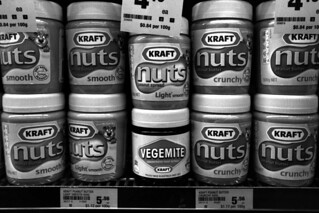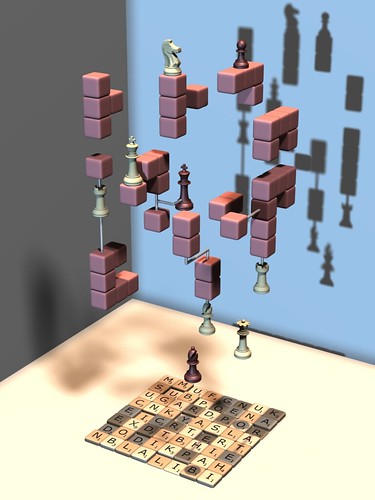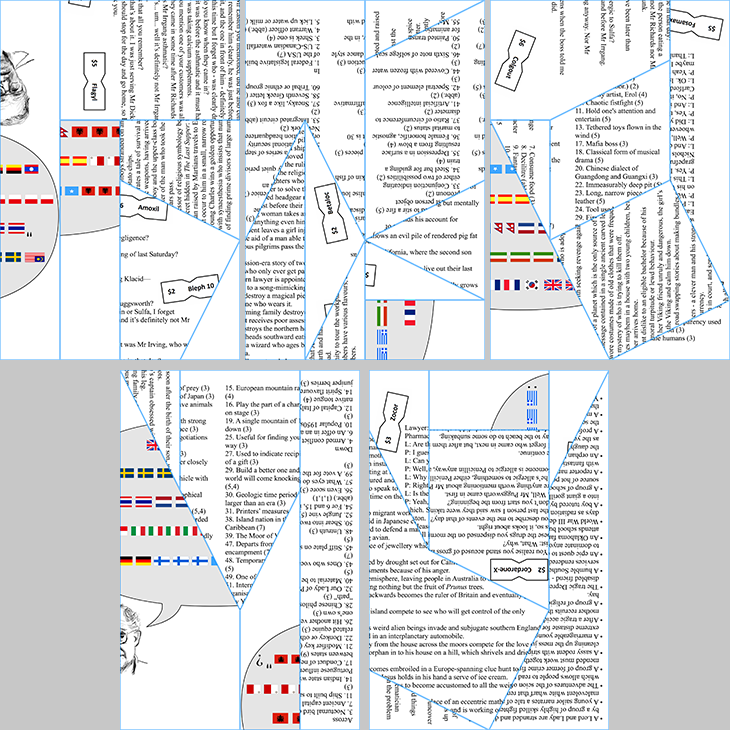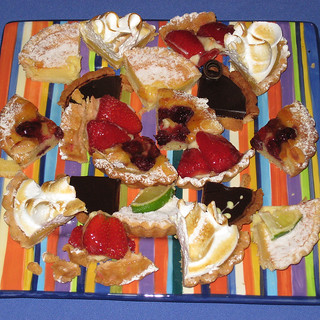

| Archive Blog Cast Forum RSS Books! Poll Results About Search Fan Art Podcast More Stuff Random |
|
Classic comic reruns every day
|
1 {photo of painted carousel horses}
1 Caption: Are these horses?
|
First (1) | Previous (3291) | Next (3293) || Latest Rerun (2895) |
Latest New (5380) First 5 | Previous 5 | Next 5 | Latest 5 Annotations theme: First | Previous | Next | Latest || First 5 | Previous 5 | Next 5 | Latest 5 This strip's permanent URL: http://www.irregularwebcomic.net/3292.html
Annotations off: turn on
Annotations on: turn off
|
 Leaves make food by photosynthesis. |
You might think: "We'll, it's a process whereby chloroplasts in plant cells take in energy from sunlight and carbon dioxide and water and produce sugars and oxygen." This is your brain parroting a piece of information that it has learnt to associate with the word "photosynthesis". But what does it actually mean? How, exactly, is this process accomplished? What are the details of the chemical and energetic pathways, what is the underlying quantum mechanics of what is going on? Why does all of that stuff happen in the way it does?
If you're a physical biochemist specialising in plant metabolism, you have a better idea than most people, but most people aren't and their knowledge stops short at an earlier stage. Yet most of you reading this are comfortable that you know something about photosynthesis and "how it works". What for you is filling in that gap of understanding between "plant makes sugar and oxygen" and being able to write down and understand the equations governing the interaction of every subatomic particle involved in that process? The answer, Hofstadter says, is analogy.
 Analogies bridge gaps... like a bridge. |
We may not do this analogising explicitly, but Hofstadter argues that our brains do it implicitly. Or brain fills in holes in our understanding with analogous concepts, so that we're comfortable that we understand the entire procedure. If our brain can find a workable analogy, all is well. If the thing we're trying to understand is so abstruse that we can't find a good analogy, then we struggle to understand it. Our ongoing education is a process of taking crude analogies we learnt when we were younger, and replacing them with better information and finer-grained analogies.
Perhaps you may not agree with Hofstadter's thesis, but to me it sounds like a feasible explanation for at least some of the process of learning and understanding. I know that when I try to learn something, I seek out similarities to things I'm already familiar with to help it all come together in my mind and be something I can recall later.
 Peanut butter. And something analogous. |
Analogies are a big part of what I try to do in these very annotations. I try to make topics of varying difficulty somewhat easier to understand. I try to help your brains draw a web of connecting concepts and analogies that make use of what you already know, in order to understand new things - things that can be thought of as having some similarities which perhaps you never saw before. Connecting to last week's topic of memory, I find these sorts of conceptual cross-links extremely valuable in cementing understanding and recall in my mind. So while Hofstadter's idea may not be the be-all and end-all of learning, I find it interesting and enlightening.
 Caution: surrounding areas may be slippery. |
I was reminded of all of this stuff about analogy making, and how it is more natural or less natural for different people, by events around the recent CiSRA Puzzle Competition, which a group of friends and I organise. The sort of puzzles we create require various levels of "brain slipperiness", or analogising, to solve. You need to consider the information provided and see the connections that are not obvious at first glance. Different puzzles work differently, of course, but many of them involve a level of analogising that stretches the normal skill level of most people.
But the thing which brought this topic to my mind recently was not solving puzzles, but the puzzle creation process, which we have to go through before we can run the competition. One of the emergent traditions of our competition is that the fourth day of puzzles released (out of a total of five groups, released mostly at daily intervals) is something we call "mess with heads day". It started in 2010 with the set of puzzles we titled:
 Figure 1. The puzzle Martial Law, Chebble, Blockhead, and The Missing Monkey. |
In 2011 we decided to continue the "mess with heads" theme by making a set of "meta" level puzzles, which all made explicit references to the fact that they were puzzles. Like a TV show about a TV show, these were puzzles about puzzles. They were:
 Figure 2. The puzzles Some Assembly Required, Interactions, Novel Plots, XYZ-Word, and Flags. |
For any of you who wish to try this for yourself, I won't reveal the answer here (but if you're curious and can't be bothered working it out yourself, there are worked solutions for all the puzzles here). That's not important to the point I want to make about analogies for today's discussion.
The point I want to make is related to the testing we do on our puzzles we've made before we release them in the competition. To ensure the puzzles are the best we can make them (including importantly that they can actually be solved by someone who didn't create them!), we test solve them without assistance from the creator, then provide feedback to help them tweak the puzzle to remove any annoying, frustrating, or effectively impossible elements.[1] We also give feedback on creative elements, such as graphical design, layout, and the puzzle title. And this year we had a suggestion which struck me as very interesting.
The puzzle "Some Assembly Required" was originally titled "Tangrams", referencing the Chinese puzzle game. It seemed like a perfect name to me, to the puzzle creator who originally suggested it, and to most of our testing group. The allusion was meant to be that the geometrically shaped pieces in the puzzles had to be cut apart and reassembled into other shapes - the very essence of the original Chinese tangram puzzle.
 Cut into geometric shapes. Though this is probably not tangrams. |
I was somewhat taken aback. Sure, the puzzle pieces were not exactly the same tangram shapes of the traditional Chinese puzzle game, but they were pieces that you cut apart and assembled into different shapes, which is what a tangram is all about. There were so many similarities between traditional Chinese tangrams and what we were doing in our puzzle that I felt it was perfectly justified to title the puzzle "Tangrams". Our last tester disagreed.
What I was doing in my mind was drawing an analogy. Tangrams and our puzzle both had a large geometric shape cut into several smaller geometric shapes, and each embodied a puzzle requiring reassembling those shapes into a different geometric shape. My mind saw all the links and easily made the analogy: "This is just like a tangram!" And so I was happy with the title. Our final tester was given exactly the same information I was given, but his mind rejected the analogy to tangrams. In his mind, tangrams have some very specific property that our puzzle did not, and so his mind refused to make the link that my mind made. And so he objected to the title "Tangrams".
In the resulting discussion over whether we should change the puzzle title or not, I pointed out how the puzzles shared so many features with tangrams that it would be almost silly not to call them tangrams. It was just a matter of applying the definition of the word a little more loosely than normal, which I was perfectly happy to do. Unfortunately by this time some of the others had considered the arguments and decided that if we could change the title to something that we were all happy with, then that would improve the situation. We floated some suggestions, and "Some Assembly Required" turned up. I was happy enough with that, so it was adopted, although I still think "Tangrams" was a superior title.
 These plants get food by catching it. The analogy here is to someone who traps animals. |
So our minds make analogies all the time, and some of us are better at making different analogies than others. I suspect there is also another distinction between people who make analogies more or less easily. As I understand it, people with varying degrees of autism tend to be more literal-minded when dealing with the world and interpreting new information. I am by no means an expert on autism, and I may well be completely off the wall here, but this sounds to me like an inherent difficulty in making analogies. Many of us deal with new things by connecting them to things we know about: "this situation is like this other situation I'm comfortable with, so I know how to react". If the analogy-making process in the brain is less capable of making these sorts of connections, the result could easily end up leaving someone foundering in a new situation, because they don't see how it resembles a more familiar situation.
I'm now hypothesising wildly and may be completely wrong, but it strikes me as an interesting thought.
|
LEGO® is a registered trademark of the LEGO Group of companies,
which does not sponsor, authorise, or endorse this site. This material is presented in accordance with the LEGO® Fair Play Guidelines. |